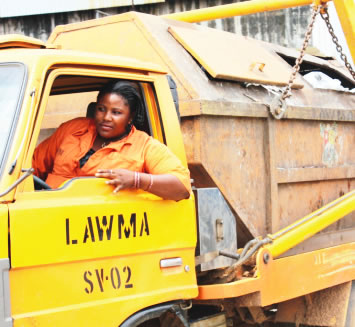THE STUDY OF THE FLOW OF TRAFFIC DUE TO HEAVY DUTY TRUCKS MOVEMENT ALONG THE ILARO-IBESE ROAD IN OGUN STATE
The
number and quantity of vehicles on roads has increased due to
technological and economic development in recent years. As a result of
this increase, traffic has been one of the most important parts of our
daily lives as people spend more time in traffic thereby forcing drivers
and other road users to face a higher risk of traffic accident.
Traffic
congestion occurs as a result of interaction between vehicles on the
road. The effect of that interaction is expressed in fundamental law of
traffic, the speed flow curve (TRB, 2011). This was described by
Goodwin, (1997), in his inaugural lecture at University College, London
in 1997 as follows : the fundamental defining relationship of our field,
the spend-flow curve shows that the more traffic uses a road, the
slower it goes, the effect becoming more and more severe as the traffic
flow approaches the maximum capacity of the network, until finally over
load is so extreme that all vehicles are unable to move.
The
rationale of taking up this field research around August 2018 is to
examine the flow of traffic due to heavy duty trucks so as to evaluate
the present state of traffic flows along that corridor and to give
insight into the probable projection of traffic flow in the future. The
projection therefore will give insight into future housing development,
likely commercial activities in that area. This will also help the
government in policy formulation and governance in that area.
Ilaro
town is a town in Ogun State Nigeria blessed with arable lands and a
very thick forest, there are major industries which includes a cement
factory owned by Nigeria’s business mogul Aliko Dangote, timber milling
industries etc. Due to the economic activities of the town and the
nature of road network in the town, it is became important to look into
the effect of heavy duty trucks on the traffic flow, accident occurrence
and the impact on traffic situation within the town.
My specific objectives are:
1. To carry out traffic count of Heavy Duty Trucks along the Ilaro-Ibese road
2. To investigate the impact of Heavy Duty trucks on the traffic situation along the road.
3. To examine the residence perception of rate of accident caused by Heavy Duty Trucks along on the road.
The methodology
used was the use of simple random sampling survey approach via the use
of questionnaire (Primary data) and Traffic counts. The use of
questionnaire attempts to examine the true view of respondent’s from the
primary source. The result was analysed using Statistical Packages for
Social Sciences (SPSS)software.
The results
of the field research therefore shows that, out of a total of 255 Heavy
Duty Trucks (HDT) counted for the time period 7am-11am and 1pm-6pm,
31.7% moved In-ward Ibese road corridor between 7–11am , 15.7% out-ward
and between 1–6pm, 23.9% moved in-ward and 28.6% moved out-ward Ibese
road.
The
result further suggests that from the total estimate, there are more
traffic flow occurring in-ward Ibese between 7–11am and Out-ward Ibese
between 1–6pm from the figure above (i.e 31.7% and 28.6% respectively).
The
results shows clearly that on a per minute basis, 0.34 trucks move per
minute in-ward ibese road between 7–11am and 0.17 trucks moved out-ward
ibese road during the same period of time. Between 1–6pm, 0.20 trucks
moved in-ward ibese road and 0.24 trucks moved per minute between the
same period of time.
Considering the length of the road between Ilaro-Ibese which is 7.3km
(according to google Map), it will take about 10 mins for 3 trucks to
move in-ward Ibese between 7–11am, 2 trucks out-ward Ibese road at the
same period. It will take 10mins for 2 trucks to move in-ward Ibese road
between 1–6pm and also 2 trucks out-ward between the same period.
The
result suggests that 20% of the respondents believe that accidents
caused by Heavy Duty Trucks occur Very Often, 10% Often, 10% Fairly
Often, 50% Not Often and 10% Not at all.
Therefore the results suggests that there is a very low traffic situation and that accidents due to heavy duty trucks rarely occur along the Ilaro-Ibese corridor for now.
It
should be noted that perhaps due to the timing of the research
(7am-6pm) that is why traffic flow of heavy duty trucks was very low
(because most heavy duty trucks moves at night time 11pm-4am) but the
good news with this pattern along that corridor it will keep the rate of
accidents involving residents very low.
My recommendation goes thus:
·
The Dangote Cement company and indeed all truck owners plying the road
should continue with their training and re-training of their drivers for
safety on the road
·
The truck owners should ensure that speed limit device be considered
and install in the various trucks in not so distance future
· The government and local government authorities should ensure that they consider putting more speed breakers along the road
· The Urban planners should regulate housing and land allocation pattern along that corridor
·
The Federal Road Safety Corps (FRSC), The Vehicle Inspection Office
(VIO), and other traffic safety organisations should be prepared for
future increase in traffic flow along the corridor.





Comments
Post a Comment